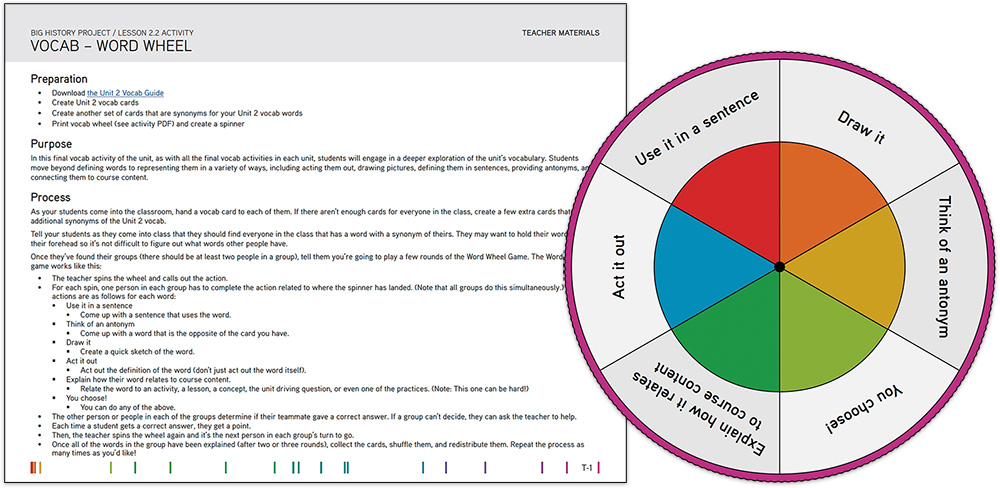By Erik Christensen, OER Project Teacher
California, US
I like reading. No, wait. I LOVE reading! Hard-boiled crime novels, science fiction, atlases, encyclopedias and almanacs (remember those?), biographies, research reports from academic journals. Heck, even the back of a shampoo bottle. You name it, I’ll read it. But reading can be complicated. When I’m up in the mountains, I “read” the weather or the terrain. As a teacher, I constantly try to “read the room.” Humans have, at various times in history, also read tea leaves, the guts of sheep, and even lines on a palm.
But in a social studies classroom, the primary method for delivering information to students is through reading printed material. To complicate this further, if your students are anything like mine, reading is not very high on their to-do lists, and many tend to avoid it like the (ahem) plague. So, here’s the challenge: How can teachers engage all students in the reading process—even the reluctant readers?
I have some ideas.
I’ve discovered that the foundation for reading in social studies is an understanding of vocabulary. Those individual words that guide students through the units of the course and help them make sense of what they’re learning. Navigating a text, printed or otherwise, is impossible without an understanding of vocabulary. So, that’s where my students start: we get familiar with words.

There are many ways to address vocabulary development in a classroom, but the most effective way is for students to play around with the words and then actually put them to use. Anyone can look up what a word means, but as anyone who has taught social studies knows (and to quote the American literary critic J.B. Kerfoot), “the dictionary is the last place to go to find the meaning of a word.” To understand and to use a word in an appropriate manner is an entirely different game.

Speaking of games, in our class, we quite literally play with words. There are a number of vocabulary resources built into OER Project courses that are fun and engaging—if you haven’t tried Word Sneak, I’m not sure what you’re waiting for! You can also use a wide variety of online resources to give students chances to play with words. Sometime later, after you’ve exposed students to lesson materials, students need to put these words to use. Responses in unit quizzes or in DQ/EQ responses are perfect opportunities for this. (You can read more about my approach to vocabulary development here. The activities are a bit older, but the process is the same.) After students know what the words mean, reading the texts becomes less challenging and students can really get down to making sense of social studies.
Reading the words on a page is certainly important, but the texts we use in social studies are complex and there is more to literacy than vocabulary development. Reading the printed word is not the only form of reading that our students can do. Students who struggle with reading traditional texts like articles or books often feel frustrated or confused in our classes. To be sure, our readers are a diverse bunch. We might observe that the student who struggles with reading printed material may be an expert at “reading” spoken materials or interpreting artwork. (The opposite of this might be true, too!) Let’s tap into these different strengths by deploying a diverse set of texts to our students.
Instead of textbooks, OER Project courses rely on a set of diverse texts to move students through history. The videos, articles, maps, comics, charts, and images help students practice reading skills in different ways. At the end of the day (OK, at the end of the course), I want students to use these diverse texts to experience history. After my class, and after students are finished with school, they will experience life in much the same way—through a variety of sources. Each of these texts requires a specific type of reading. OER Project provides a number of scaffolds and instructional materials to guide students through these sources. You can read more about these materials here.
Reading can be intimidating and challenging for our students. Teaching reading can be equally challenging for social studies teachers. However, I think there’s a simple formula that can be used in any social studies classroom: Develop vocabulary, deploy diverse texts, make sense of the world. And then, just like it says on the back of that shampoo bottle: Lather, rinse, repeat.
About the author: Erik Christensen is a sixth-year teacher at Granada Hills Charter in Los Angeles, California. He holds a graduate degree in education from Claremont Graduate University where he is a Peter Lincoln Spencer Fellow for his work with literacy. Erik has won numerous awards for his work with students, including the Outstanding Rookie Teacher of the Year (2020) awarded by the California Council for Social Studies.
Cover image: No boundaries to imagination. Little kids, boy and girl, flying on books in the sky. © Aleutie / iStock / Getty Images Plus
 For full access to all OER Project resources AND our amazing teacher community,
For full access to all OER Project resources AND our amazing teacher community, 
